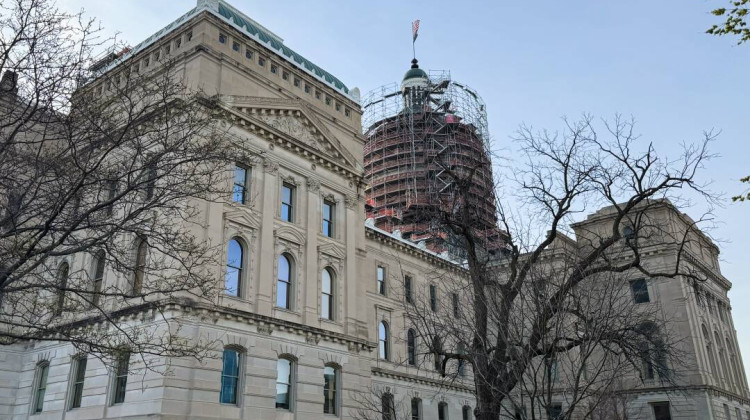
Nationally, union workers' median weekly wages were almost $200 higher than non-union workers in 2022.
Adam Rayes/IPB NewsRecent polling suggests a lot more Americans approve of unions today than 10 years ago. But new federal estimates show that approval hasn't necessarily translated to large gains in membership – especially in Indiana.
The number of union workers nationwide increased by several hundred thousand people to a total of 14.3 million in 2022, according to the Bureau of Labor Statistics. But the nation's workforce also grew last year, meaning those union workers make up a slightly smaller percentage than they did in 2021.
Indiana enacted a "right-to-work" law in 2012 which prohibits unions or employers from requiring anyone to become a member of their labor organization.
Some organizations and researchers, like the National Bureau of Economic Research, argue that such laws bring down union membership and wages more broadly. Others, like the free market think tank Buckeye Institute, disagree.
Join the conversation and sign up for the Indiana Two-Way. Text "Indiana" to 73224. Your comments and questions in response to our weekly text help us find the answers you need on statewide issues.
Under federal law, all employees that could be covered by a collective bargaining agreement get the full benefits of the wages and other contract terms the union bargains with their employer, even if that employee isn't a dues-paying member of the union. As a result, many states have or, like Indiana, once had laws that require workers to be members of any union that would cover their position at their company.
So in 2022, BLS data suggests there were about 37,000 employees in Indiana whose jobs were covered by a labor organization's collective bargaining, but were not actually members.
Nationally, union workers' median weekly wages were almost $200 higher than non-union workers in 2022. The difference varies for workers of different ages, races and sexes, but union weekly wages were generally higher.
Black workers have the highest unionization rates across the country, according to the BLS data. Demographic breakdowns are not available for states.
Contact reporter Adam at arayes@wvpe.org or follow him on Twitter at @arayesIPB.
9(MDAyMzk1MzA4MDE2MjY3OTY1MjM5ZDJjYQ000))
 DONATE
DONATE






 Support WFYI. We can't do it without you.
Support WFYI. We can't do it without you.